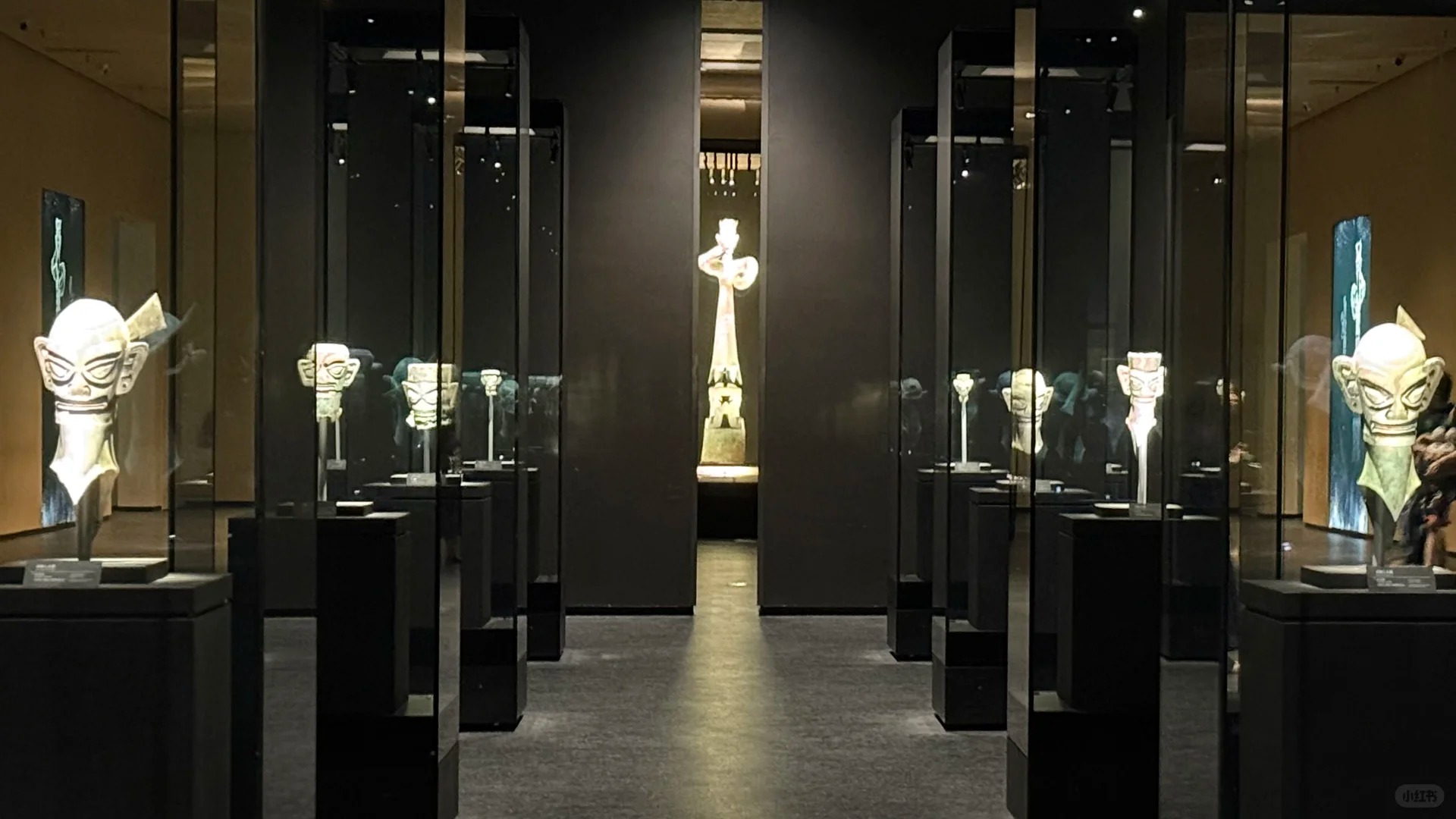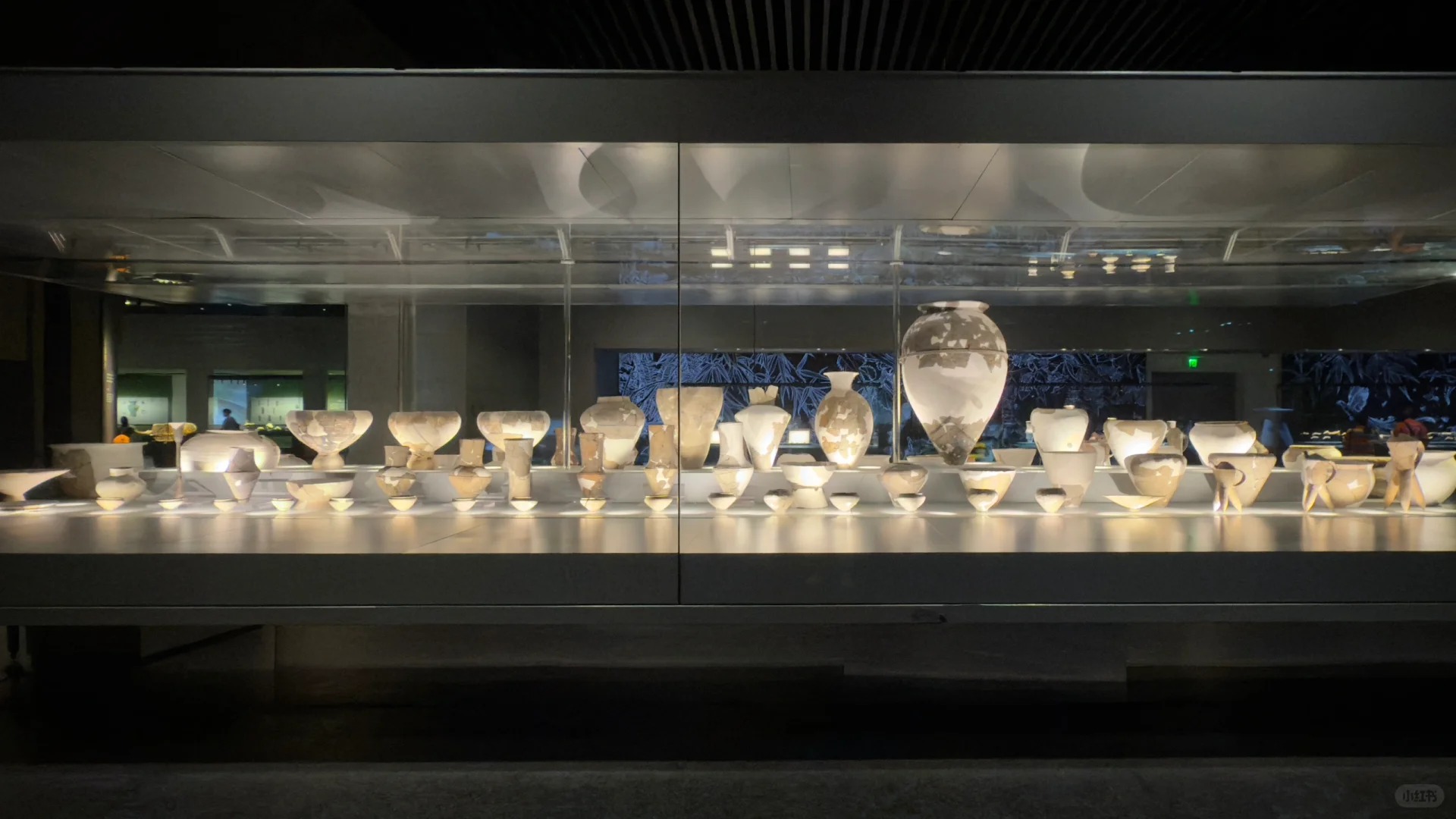Sanxingdui Museum

Historical Overview
First excavated in 1929, systematic research began in 1986 when workers accidentally unearthed two sacrificial pits. Radiocarbon dating confirmed the artifacts’ 3,000-year-old origins, predating the nearby Jinsha Site by 500 years. The civilization’s sudden disappearance around 1000 BCE remains unexplained, with theories ranging from floods to warfare. In 2020, six new pits were discovered, yielding 500+ additional artifacts that deepen archaeological understanding. The site’s name derives from three earth mounds interpreted as ancient watchtowers.
Structural Layout
The museum complex comprises three core zones:
- Exhibition Hall 1: Chronological display of bronze, gold, and jade artifacts.
- Exhibition Hall 2: Thematic presentation of religious artifacts and Shu cosmology.
- Archaeological Park: Reconstructed excavation pits and conservation labs.
Key structures include the spiral-shaped main building (2004) and the 2022-opened "Sanxingdui Ancient City" outdoor exhibition.
Major Attractions
Bronze Divine Tree: A 3.96-meter-tall tree with 10 birds and 27 fruits, symbolizing Shu mythology.
Gold Scepter: The world’s largest ancient gold artifact (1.42kg, 100cm length).
Bronze Mask with Protruding Eyes: A 1.38-meter-wide mask with 16cm-diameter eyes.
Jade Cong: 500+ ritual jade tubes used in ancestral worship.
Elephant Trunk Pottery: 1-meter-tall vessels demonstrating advanced pottery techniques.
Bronze Human Figures: Over 200 life-sized statues with distinctive postures.

Suggested Itineraries
1. Classic Route (2 hours):
Main Entrance → Exhibition Hall 1 (Bronze Age Overview) → Key Artifacts Display → Archaeological Park → Gift Shop
Highlights: Iconic masks, gold scepter, and bronze tree.
2. Deep Dive Route (3–4 hours):
Add: Exhibition Hall 2 (Religious Artifacts) → Conservation Lab Tour → 3D Film "Mystery of Sanxingdui"
Highlights: Jade rituals, Shu cosmology, and artifact restoration process.
3. Comprehensive Route (Full Day):
Morning: Classic Route + Deep Dive Route
Afternoon: Jinsha Site Museum (1-hour drive) → Comparative Analysis of Shu Civilizations
Ticket Purchase
Online: Book via official website or Ctrip (up to 7 days in advance).
On-Site: Limited same-day tickets; queues peak at 10 AM–1 PM.
Prices:
General Admission: ¥72 (peak), ¥60 (off-peak)
Combined Ticket (Sanxingdui + Jinsha): ¥120
Free: Children under 1.3m, disabled visitors.
Transportation
High-Speed Rail: Chengdu East Station → Guanghan North Station (20 mins), then taxi (15 mins).
Bus: Chengdu Chadianzi Station → Guanghan Center Station (1.5 hours), then Bus 6 → Museum Stop.
Taxi: Direct from Chengdu (40 mins, ¥150–¥200).
Tour Packages: Available through Ctrip/Fliggy with round-trip transport.
Best Time & Tips
Peak Hours: Avoid 10 AM–1 PM; visit early (8:30 AM opening) or late (after 3 PM).
Crowds: Weekends and holidays are busiest; weekdays offer quieter viewing.
Weather: spring (March–May) and autumn (October–November) ideal for outdoor zones.
Essentials:
Wear comfortable shoes (10,000+ steps possible).
Bring binoculars for detailed artifact observation.
Photography allowed (no flash in Hall 1/2).
Prohibited: Touching exhibits, large bags.
Cultural Significance
Sanxingdui redefines ancient Chinese history by proving the existence of a sophisticated civilization independent of the Central Plains. Its artifacts’ alien-like features—giant eyes, abstract patterns—fuel theories about ancient cultural exchanges. The museum’s modern architecture, blending triangular forms symbolizing Shu cosmology, creates a dialogue between past and present, making it essential for history enthusiasts and art lovers alike.
Contact Us
What Our Clients Say?
Based on 10,000+ traveler reviews














